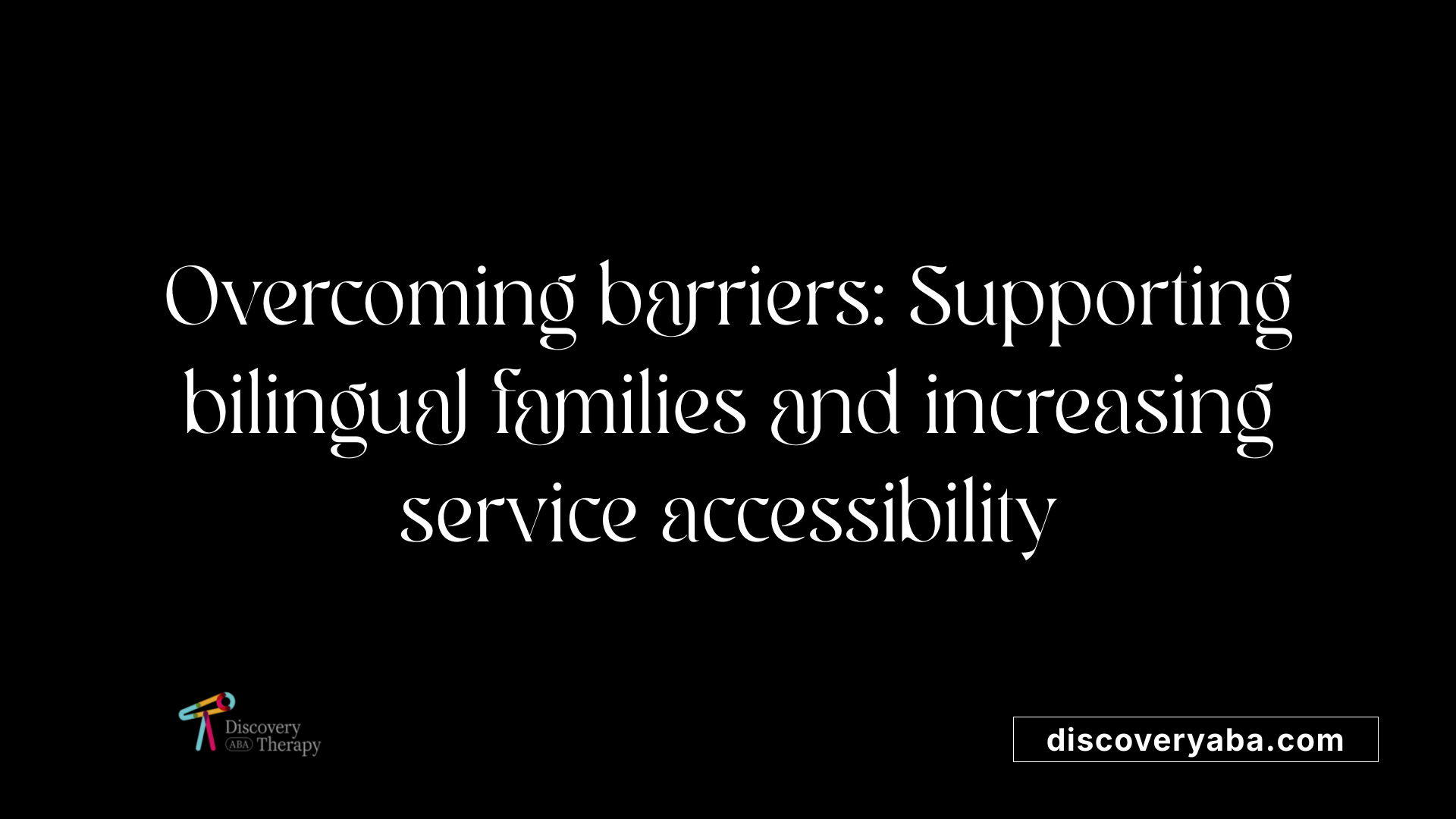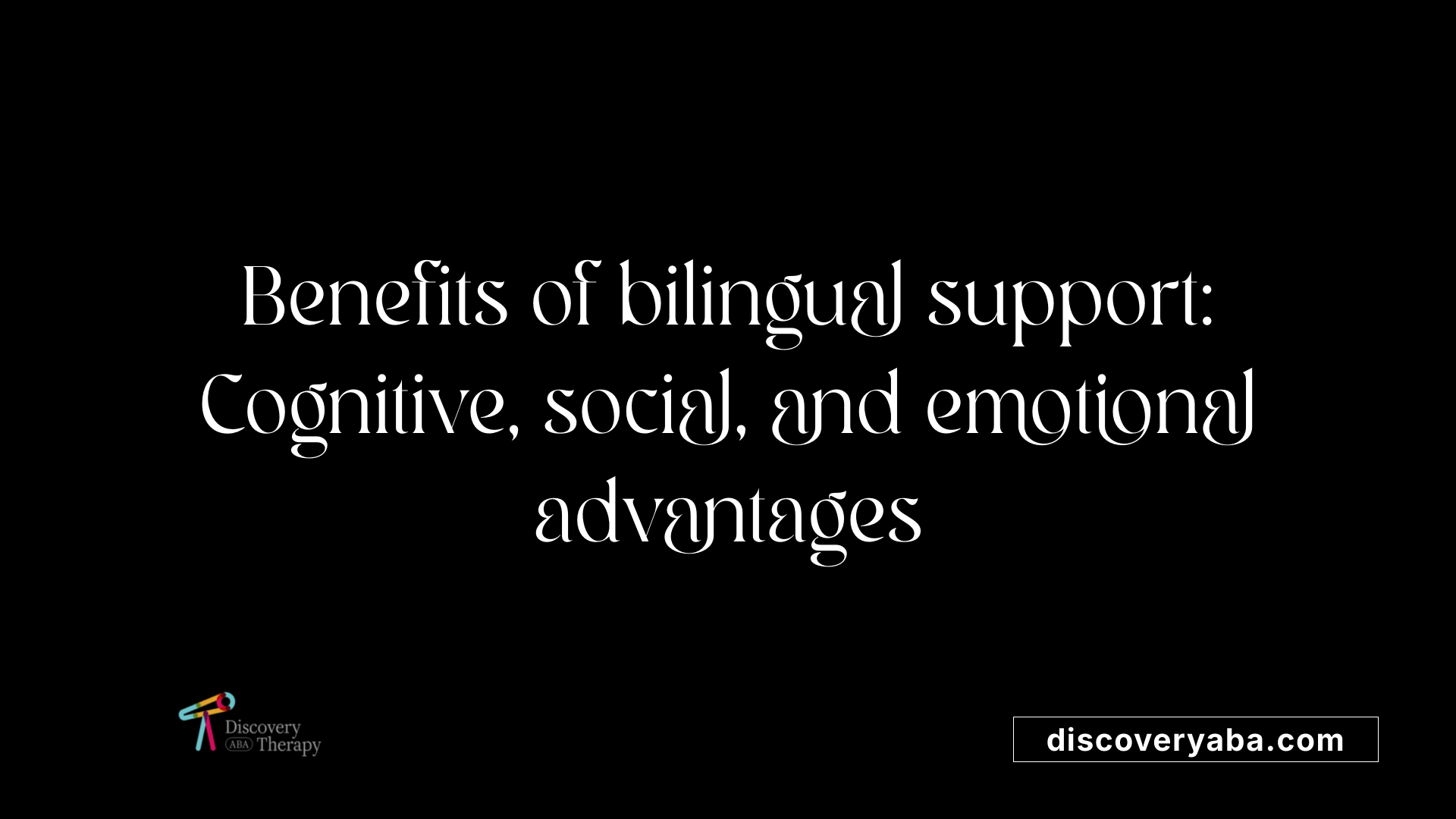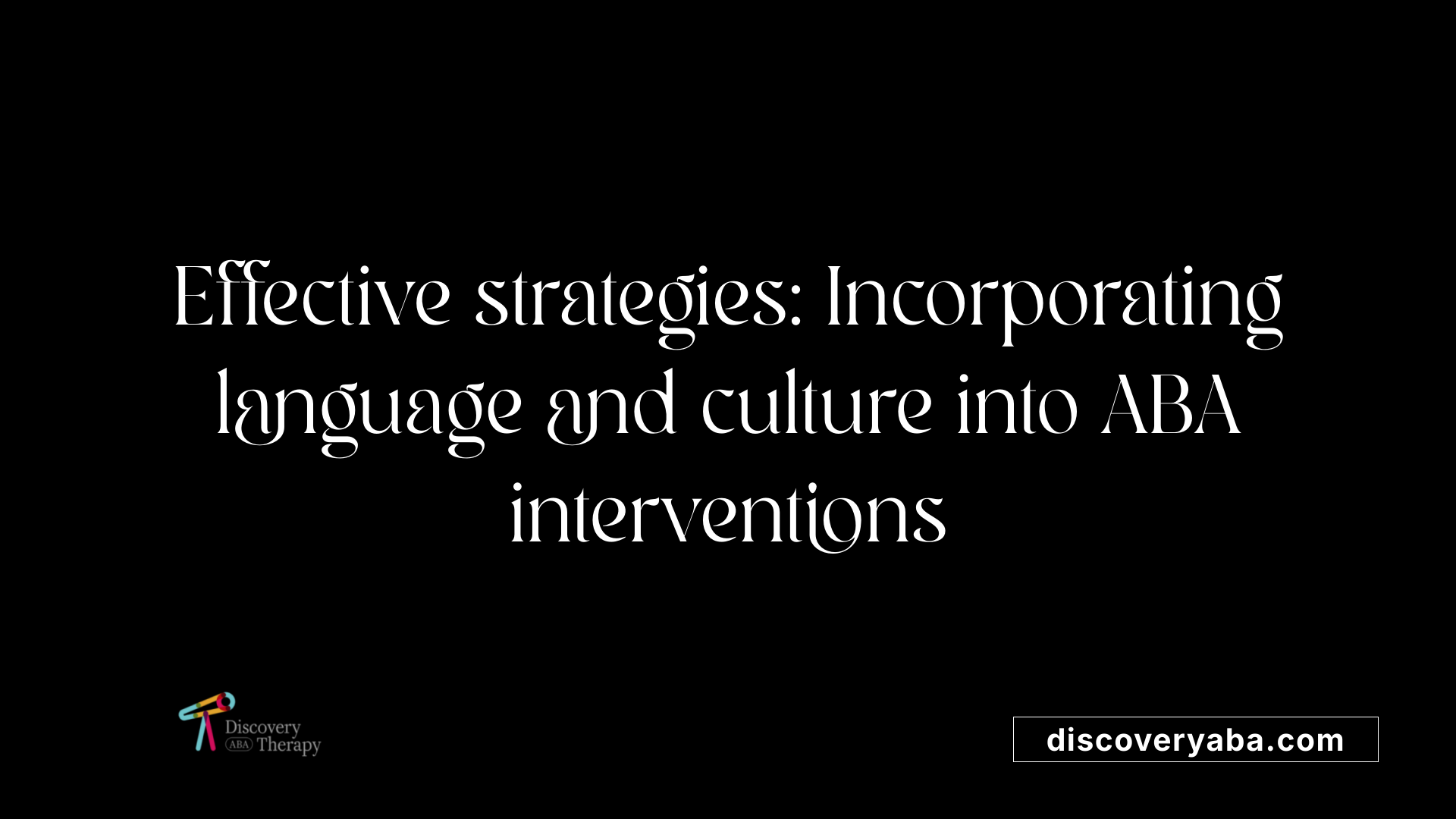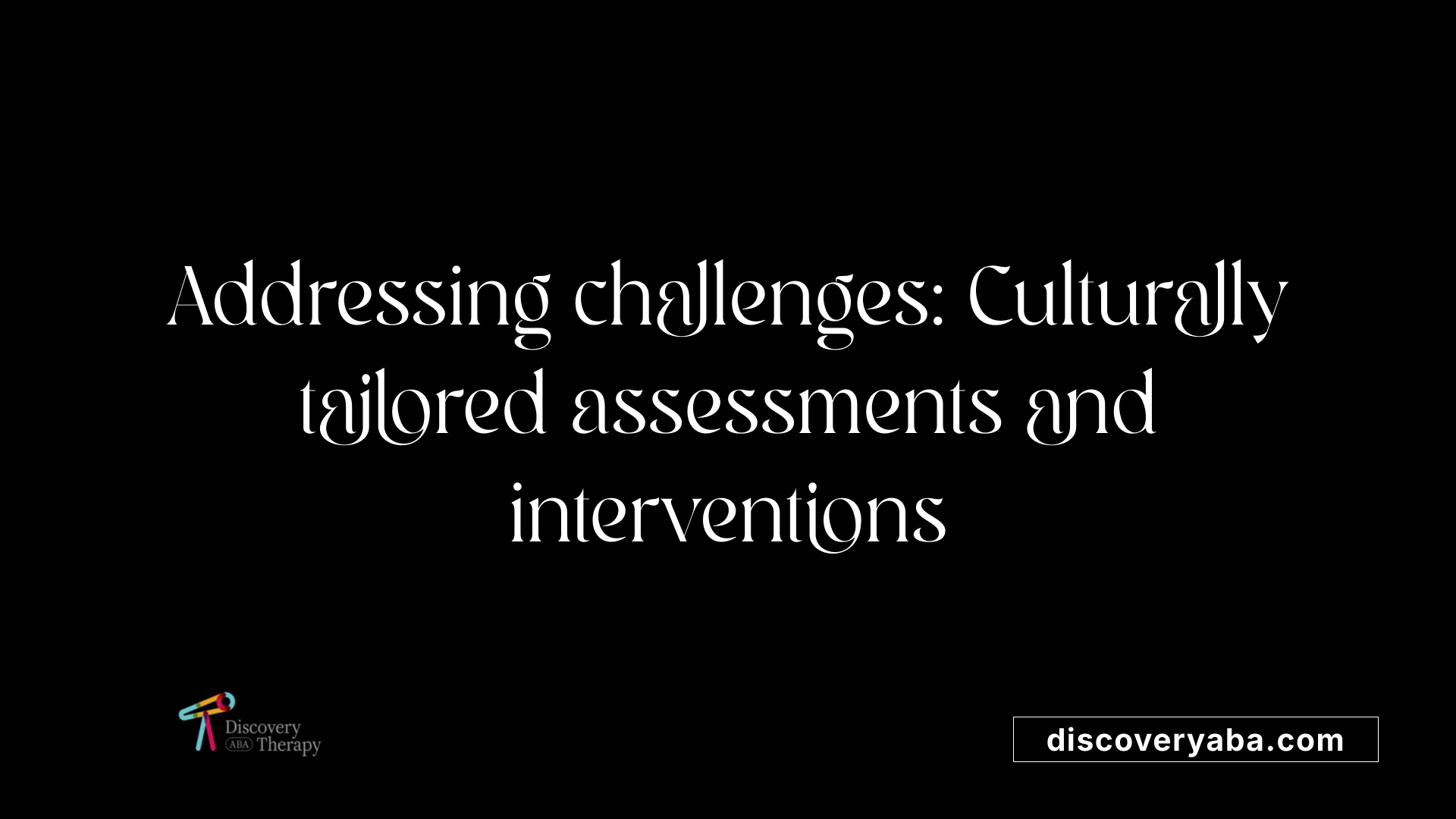Using ABA to support bilingual or multilingual children
Bridging Languages and Behaviors: Advancing Multilingual Autism Support

Understanding the Intersection of ABA and Bilingualism in Autism
As multicultural populations grow, so does the importance of tailored autism interventions that respect and promote bilingualism and multilingualism. While traditionally, clinicians have hesitated to recommend dual-language exposure for children with autism due to concerns about delays, emerging research and practice recognize that supporting a child's native language within ABA frameworks can significantly enhance communication, cultural identity, and social integration.
The Current State of Multilingualism in ABA and Autism Treatment

Limited research and practice addressing multilingual diversity within ABA
Despite the growing diversity of families affected by autism, research on multilingual approaches in Applied Behavior Analysis (ABA) remains limited. Few studies explicitly explore how using multiple languages in therapy impacts outcomes. Existing research generally shows that bilingual children with autism develop language skills at rates comparable to monolingual peers, and some evidence suggests that incorporating a child's heritage language can improve response accuracy and reduce challenging behaviors.
The role of cultural and linguistic considerations in treatment efficacy
Integrating cultural values and using the child's native language in ABA therapy are crucial for success. Culturally adapted materials and visual supports that reflect family languages and traditions enhance acceptance and engagement. Discussing cultural norms with the family ensures that therapy aligns with their expectations, improving the quality and relevance of interventions.
Barriers faced by bilingual families seeking ABA services
Many bilingual families encounter significant obstacles when accessing ABA services. The shortage of bilingual therapists hampers the ability to provide linguistically and culturally appropriate care. Families often report difficulties finding providers who speak their native languages or who understand their cultural contexts. This can lead to underutilization of services and disparities in intervention outcomes.
Supporting Benefits of Bilingualism in Children with Autism
Supporting children with autism to develop multiple languages offers various advantages. It promotes stronger communication skills across different social settings, fosters better cognitive flexibility, and enhances social skills like perspective-taking. Maintaining the heritage language also strengthens family bonds and cultural identity, promoting emotional well-being.
Is it possible for autistic children to be bilingual?
Yes. Research indicates that autistic children can successfully learn and use more than one language. Studies show that bilingualism does not cause delays or additional issues beyond those typical of autism itself. In fact, many autistic individuals are bilingual — with some identifying as speaking three or more languages — and their language development patterns mirror those of monolingual peers.
Moving forward
Advancing research and increasing the availability of bilingual ABA practitioners are essential. Supporting cultural competence in training programs, translating materials, and cultivating a diverse workforce will improve service accessibility. Emphasizing family-centered, culturally sensitive support can help autistic children thrive in multilingual environments and strengthen their social and emotional skills.
Research Insights and Scientific Perspectives on Bilingual ABA Therapy

What are the benefits of supporting bilingual or multilingual children with ABA?
Supporting children with autism in bilingual or multilingual environments offers numerous developmental advantages. It promotes diverse communication skills, helping children engage more meaningfully with family, peers, and community across different languages. Such support reinforces cultural identity, fostering a strong connection to one’s heritage.
Bilingual children often demonstrate enhanced cognitive abilities, including improved problem-solving skills, greater self-control, and increased cognitive flexibility. These skills are crucial for academic success and social participation. Additionally, maintaining proficiency in multiple languages can enrich social-emotional development, making interactions more authentic and culturally relevant. Overall, integrating bilingual support within ABA therapy not only improves language and social skills but also strengthens self-identity and cultural awareness.
Are autistic children able to be bilingual, and what does research say about this?
Evidence indicates that children with autism can indeed be bilingual. Studies reveal that multilingual exposure does not hinder language development; in fact, many children with ASD successfully acquire multiple languages.
Research shows that a significant portion of autistic adults are bilingual or multilingual—one study reported that 33% identified as bilingual, and 37% knew at least three languages. Such findings demonstrate that bilingualism is a feasible and enriching experience for children with autism. Furthermore, current research supports the idea that bilingual children with ASD develop language skills comparable to their monolingual peers, with no significant delays attributable directly to bilingual exposure.
Additional insights
Scientific literature emphasizes that bilingualism can offer cognitive, social, and cultural benefits for children with autism. It can improve executive functioning, such as impulse control and flexibility, and boost social perspective-taking abilities. Given this evidence, integrating multilingual strategies within ABA therapy is increasingly supported, provided that interventions are tailored to each child's unique language profile and cultural context.
This growing body of research underscores the importance of culturally and linguistically sensitive practices, advocating for broader access to bilingual ABA services to foster optimal developmental outcomes for children with ASD.
Strategies and Best Practices for Implementing Bilingual ABA

What are effective strategies for implementing ABA with bilingual or multilingual children?
Implementing ABA with children who speak multiple languages requires thoughtful adaptation to ensure effectiveness and cultural sensitivity. One key approach involves actively incorporating the child's heritage or native language into therapy sessions. This helps build comfort, familiarity, and confidence in communication, making learning more meaningful.
Using visual supports, gestures, and demonstrations is crucial. These tools transcend language barriers and help children grasp concepts more effectively, regardless of the language spoken. Reinforcing language with praise and providing ample response time further encourages expressive efforts and helps reduce frustration.
Engaging families is another essential component. Families should be encouraged to speak their native language at home. This supports preservation of cultural identity and facilitates communication outside the therapy setting. Sharing cultural resources and incorporating relevant community practices also enriches the intervention and makes it more culturally relevant.
Assessment strategies should be tailored to the child's primary language. Conducting evaluations in the home language ensures accurate understanding of the child's skills and needs. This guides clinicians in designing personalized treatment plans that respect linguistic and cultural backgrounds.
Furthermore, adapting instructional materials for cultural and linguistic relevance enhances engagement and understanding. This can include translating visual aids, using culturally familiar examples, and developing bilingual or multilingual resources. Such practices align with the principles of cultural competence and help foster better learning outcomes.
In summary, effective bilingual ABA practices integrate language, culture, and family collaboration. Tailoring interventions to reflect the child's linguistic context not only promotes communication and skill development but also celebrates cultural diversity, supporting long-term success.
Benefits and Challenges of Bilingualism in Autism Support

What are the benefits of supporting bilingual or multilingual children with ABA?
Supporting bilingual or multilingual children with ABA provides a range of developmental advantages. It helps children develop communication skills in multiple languages, allowing them to connect with family, friends, and community members from diverse backgrounds. Bilingual children often demonstrate stronger cognitive skills, such as improved problem-solving, greater cognitive flexibility, and enhanced self-control. These abilities contribute positively to academic readiness and social functioning.
Furthermore, maintaining a child's native language through ABA supports cultural identity and familial bonds, fostering emotional well-being. The ability to communicate across languages also promotes social-emotional skills, helping children better navigate social environments and build meaningful relationships. Overall, bilingual support in ABA nurtures language, cognitive, and social growth, providing children with tools for lifelong cultural competence and social adaptability.
Are autistic children able to be bilingual, and what does research say about this?
Research indicates that autistic children can successfully become bilingual. A systematic review found no evidence that bilingualism negatively impacts language development in children with ASD. Many bilingual autistic individuals develop strong communication skills in both languages, and studies show that their language development trajectories are comparable to monolingual peers.
Surveys of autistic adults reveal that a significant proportion, approximately 33%, identify as bilingual, and over a third speak at least three languages. This data underscores that autism does not inherently hinder the ability to learn multiple languages when supported appropriately. These findings emphasize that supporting bilingual development is feasible and beneficial for children with autism.
How can ABA support language development for bilingual or multilingual children with autism?
ABA therapy plays a vital role in fostering language skills in bilingual children with autism. It encompasses teaching functional communication involving requesting, labeling, and social interactions in multiple languages. Techniques such as mand training, echoic practice, and intraverbal exercises are employed to promote verbal behavior across languages.
Early intervention with ABA can lead to significant improvements in overall communication, with strategies tailored to the child's language environment. Caregiver involvement is crucial for generalization, enabling children to use learned skills in various settings and languages. ABA providers often collaborate with speech-language therapists to ensure consistency and reinforce bilingual language exposure.
By applying structured, individualized approaches that respect the child's linguistic background, ABA can effectively support multilingual children in reaching their communication milestones, ultimately enhancing their social participation and quality of life.
The Importance of Cultural and Linguistic Appropriateness in ABA
 Incorporating cultural and linguistic considerations into Applied Behavior Analysis (ABA) therapy is vital for supporting children with autism spectrum disorder (ASD) from diverse backgrounds. One effective approach involves using visual supports and materials that reflect the child's culture and language. For example, incorporating images, symbols, and stories from the child's community helps increase engagement and makes learning more relatable.
Incorporating cultural and linguistic considerations into Applied Behavior Analysis (ABA) therapy is vital for supporting children with autism spectrum disorder (ASD) from diverse backgrounds. One effective approach involves using visual supports and materials that reflect the child's culture and language. For example, incorporating images, symbols, and stories from the child's community helps increase engagement and makes learning more relatable.
Collaborating with families is essential to honor their cultural values and norms. This partnership ensures that intervention strategies align with family beliefs and traditions, fostering trust and cooperation. Discussing cultural expectations about communication, social behavior, and education allows therapists to adapt their approaches and make them more effective.
Assessment and intervention plans should be tailored to the child's linguistic background. For bilingual or multilingual children, conducting assessments in all relevant languages provides a more accurate understanding of their skills and needs. Intervention strategies should incorporate both languages when appropriate, supporting dual language development and generalization of skills across settings.
Research indicates that supporting children's native languages enhances communication opportunities and strengthens family bonds. When therapy respects linguistic and cultural identities, it leads to better outcomes and more meaningful progress.
| Strategies | Implementation Examples | Expected Outcomes |
|---|---|---|
| Use culturally relevant visual supports | Images and stories depicting the child's cultural context | Increased engagement and comprehension |
| Collaborate with families to incorporate cultural values | Regular discussions and shared decision-making | Culturally sensitive interventions that resonate |
| Tailor assessment and treatment plans | Conduct bilingual assessments, incorporate both languages | Accurate skill assessment, effective language development |
Supporting bilingual children in ABA not only respects their cultural identity but also promotes social and communication skills that benefit them for a lifetime.
Future Directions and Improving Multicultural ABA Support

What are the challenges and considerations in applying ABA to multilingual children with autism?
Applying ABA therapy to children who grow up bilingually involves specific challenges and important considerations. One major issue is the shortage of bilingual and multilingual ABA therapists, which limits access to culturally and linguistically appropriate care.
Parents often worry that exposing their children to multiple languages might cause delays or confusion. While research shows that bilingualism does not negatively impact language development in children with autism, these parental concerns remain prevalent.
Assessment presents another obstacle. Standard testing tools are often designed for monolingual children and may not accurately reflect the language skills of bilingual children. This can lead to misinterpretations of strengths and needs, affecting intervention planning.
Cultural values and family expectations should guide intervention strategies. Recognizing the importance of the child's heritage language and cultural norms allows practitioners to develop more meaningful and effective programs.
To address these challenges, expanding the number of bilingual ABA clinicians is essential. Additionally, creating and distributing culturally adapted, bilingual materials and assessment tools can improve the precision of evaluations and interventions.
Partnerships with families are crucial. Tailoring therapy plans to include the family's language and cultural practices fosters trust and supports meaningful communication.
Looking ahead, policies supporting diversity and inclusion within ABA services are vital. Such policies can encourage recruitment, training, and fair compensation for multilingual practitioners. Promoting a workforce that reflects the linguistic and cultural diversity of the community will enhance service accessibility and quality.
Overall, fostering a socially sensitive, culturally competent approach in ABA can significantly improve outcomes for multilingual children with autism, ensuring they receive respectful, effective, and individualized care.
The Path Forward: Embracing Multilingualism in ABA for Autism
Supporting bilingual and multilingual children with autism through ABA is increasingly recognized as both feasible and beneficial. Integrating cultural and linguistic considerations into intervention strategies, expanding professional training, and developing resources that honor linguistic diversity are essential steps toward equitable and effective autism care. Embracing multilingualism not only enhances language and social outcomes but also respects the child's cultural identity, ultimately fostering inclusive growth and development in a diverse society.
References
- Multilingual Diversity in the Field of Applied Behavior Analysis and ...
- 5 Tips for Navigating Autism Treatment for Your Multilingual Child
- What are some language considerations when working with ...
- Professional Development in Autism and Multilingualism for ...
- Bilingualism and Autism: Navigating Benefits, Challenges
- Autism and Second Language Learning: What to Know - ABA therapy
- Bilingual Families with a Child with ASD: A Research Review and ...
- Why and How to Teach Two Languages to Children with Autism ...
Does Your Child Have An Autism Diagnosis?
Learn More About How ABA Therapy Can Help
Find More Articles
Contact us
North Carolina, Nevada, Utah, Virginia
New Hampshire, Maine
Arizona, Colorado, Georgia, New Mexico, Oklahoma, Texas
.avif)




































































































